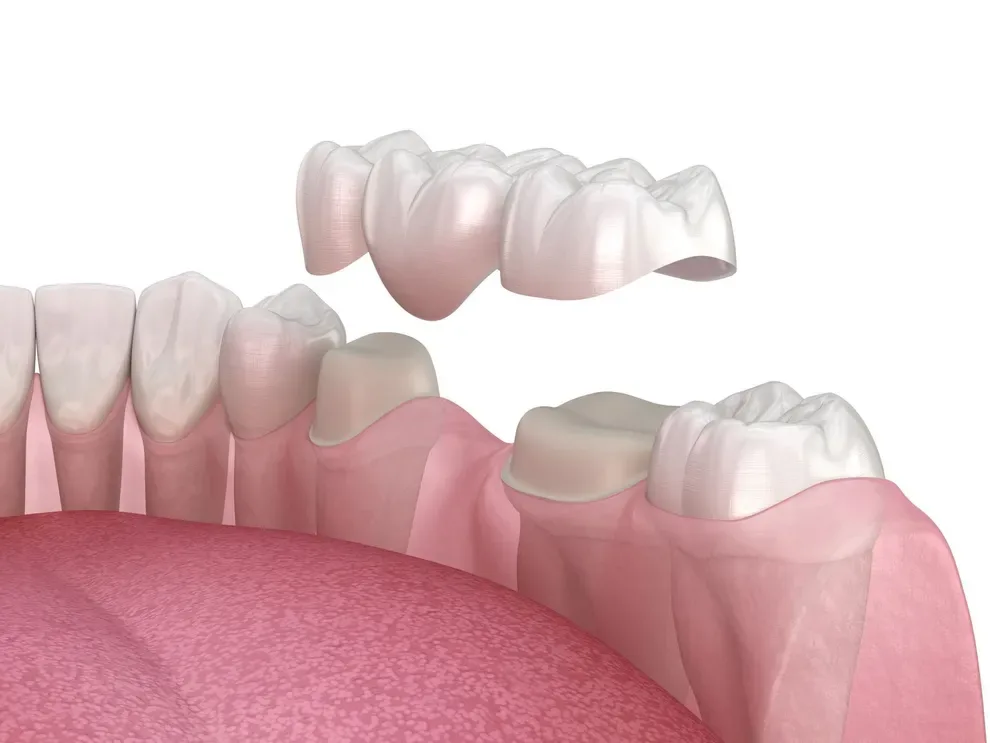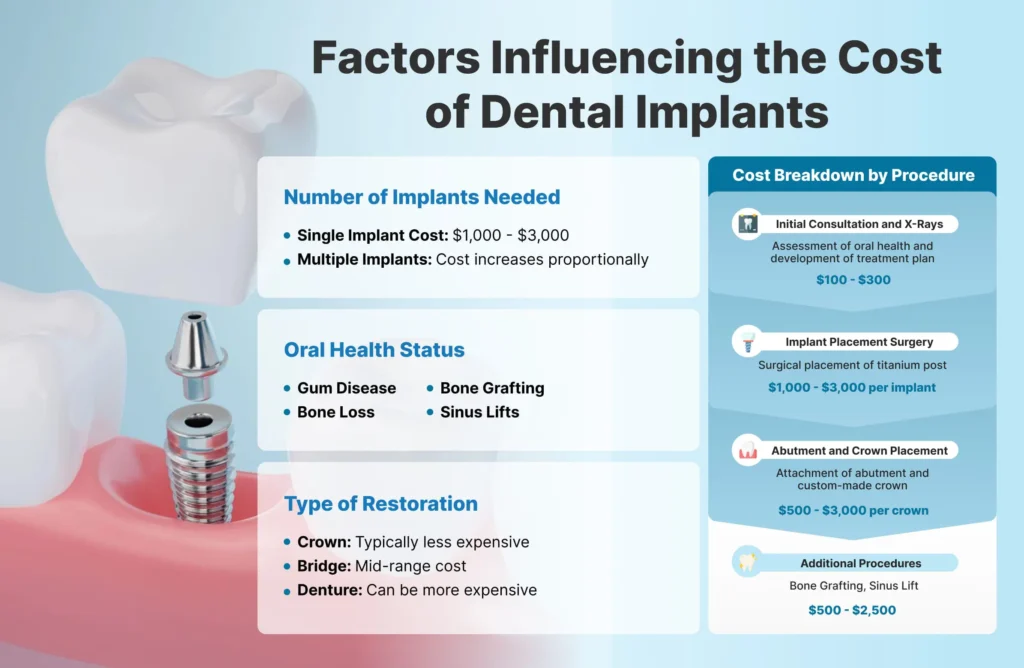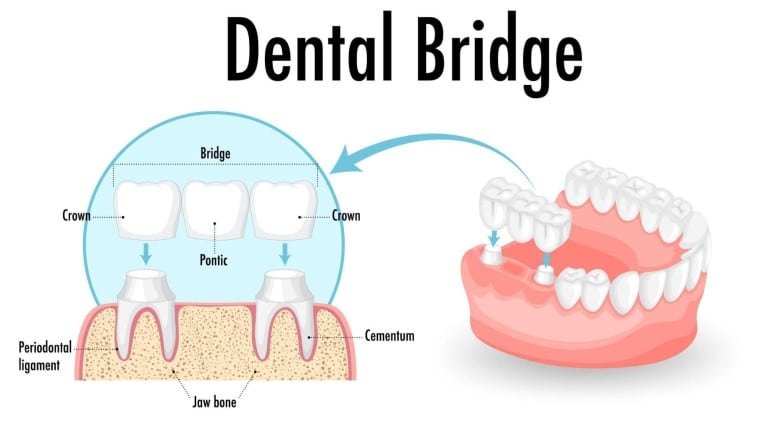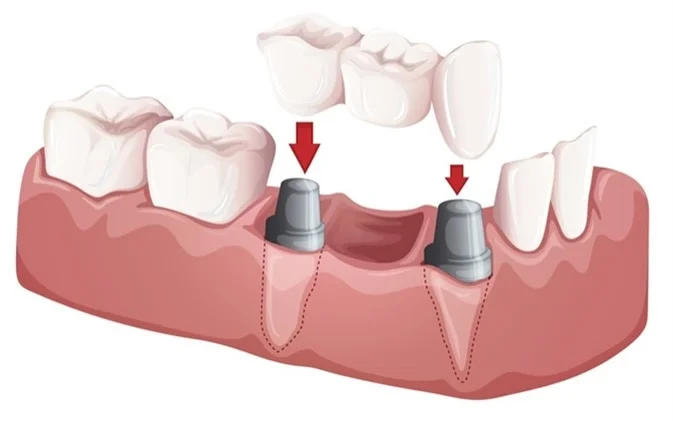When you’re faced with the need for a dental bridge, one of the biggest questions on your mind is likely: “How much is this going to cost me, and how will my insurance help?” Dental bridges are a common solution for missing teeth, but their costs and insurance coverage can be a bit of a labyrinth. Fear not! This guide is here to simplify everything, providing a clear picture of what to expect and how to navigate the financial side of getting a dental bridge.
What is a Dental Bridge?

Before diving into costs and insurance specifics, let’s start with the basics. A dental bridge is a fixed dental restoration used to replace one or more missing teeth. It literally “bridges” the gap left by missing teeth.
There are several types of dental bridges, including

- Traditional Bridges: These use crowns on the teeth adjacent to the gap and a false tooth (or teeth) in between.
- Cantilever Bridges: These are used when there are adjacent teeth on only one side of the gap.
- Maryland Bridges: Also known as resin-bonded bridges, these are used for replacing front teeth and involve a metal or porcelain framework that is bonded to the back of adjacent teeth.
- Implant-supported Bridges: These are supported by dental implants rather than natural teeth, providing a more stable and long-lasting solution.
Factors Affecting the Cost of Dental Bridges

The cost of a dental bridge can vary significantly based on several factors:
- Type of Bridge: Traditional bridges tend to be more affordable than implant-supported bridges due to the complexity of the latter.
- Material: The materials used can affect the cost. Porcelain and ceramic bridges are generally more expensive than metal bridges.
- Location: Dental fees can vary depending on your geographic location. Urban areas might have higher prices compared to rural areas.
- Dentist’s Experience: The skill and experience of the dentist can also play a role in the cost.
- Additional Procedures: If additional procedures are needed, such as tooth extractions or gum treatments, this can increase the overall cost.
Typical Cost Range

On average, the cost of a dental bridge in the United States can range from $1,500 to $5,000 or more per bridge. Here’s a rough breakdown:
- Traditional Bridge: $1,500 to $3,000 per unit.
- Cantilever Bridge: $1,800 to $4,000 per unit.
- Maryland Bridge: $1,500 to $2,500 per unit.
- Implant-supported Bridge: $5,000 to $15,000 or more, depending on the number of implants and bridges needed.
Coverage Overview

- Type of Insurance Plan: Not all dental insurance plans cover bridges, and those that do may have different levels of coverage. Many insurance plans cover 50% of the cost of a bridge, but this can vary.
- Annual Maximums: Most dental insurance plans have an annual maximum benefit, typically ranging from $1,000 to $2,000. If you need a bridge that costs more than your plan’s maximum, you’ll need to pay the difference.
- Deductibles: Some plans require you to meet a deductible before coverage kicks in. This can be an additional upfront cost.
- Pre-authorization: Many insurance companies require pre-authorization for dental bridges. This means you’ll need to submit a treatment plan to your insurance provider before proceeding.
Steps to Maximize Your Insurance Benefits

- Check Your Policy: Review your insurance policy carefully to understand what’s covered and what’s not.
- Get Pre-authorization: Submit a request for pre-authorization to ensure that your insurance will cover the treatment and to get an estimate of what you’ll owe.
- Ask About Discounts: Some dentists offer payment plans or discounts if you pay in full upfront, which might help you manage the cost.
Cost Comparison: With vs. Without Insurance

Let’s break down a simple example to illustrate the cost difference with and without insurance:
- Total Cost of Dental Bridge: $3,000
- Insurance Coverage (50%): $1,500
- Out-of-Pocket Cost with Insurance: $1,500
Without insurance, you would be responsible for the full $3,000. With insurance, you’re paying $1,500, assuming the insurance covers half and there are no additional deductibles or fees.
Preparing for Your Dental Bridge Procedure

Preparation is key to ensuring a smooth and cost-effective experience. Here’s what you should do:
- Consult with Your Dentist: Discuss your options and get a detailed treatment plan.
- Understand the Costs: Get a written estimate of the total cost and insurance coverage.
- Plan Financially: Determine how you will cover any out-of-pocket expenses.
Conclusion
Navigating the cost of dental bridges with insurance can seem daunting, but understanding the factors involved and how your insurance can help makes it much easier. From knowing what type of bridge is right for you to maximizing your insurance benefits and exploring alternative financing options, you can make an informed decision and manage your expenses effectively.
Remember, while the thought of dealing with dental costs might not be the most exciting part of your day, a healthy smile is definitely worth the investment. And hey, if you end up saving a few bucks with insurance, you can always celebrate with a nice cup of coffee—just make sure to enjoy it with your new, shiny bridge! 😄
For more detailed information and personalized advice, don’t hesitate to reach out to your dental provider or insurance company. They can provide specific details based on your individual situation.
Stay smiling and budget smart!



